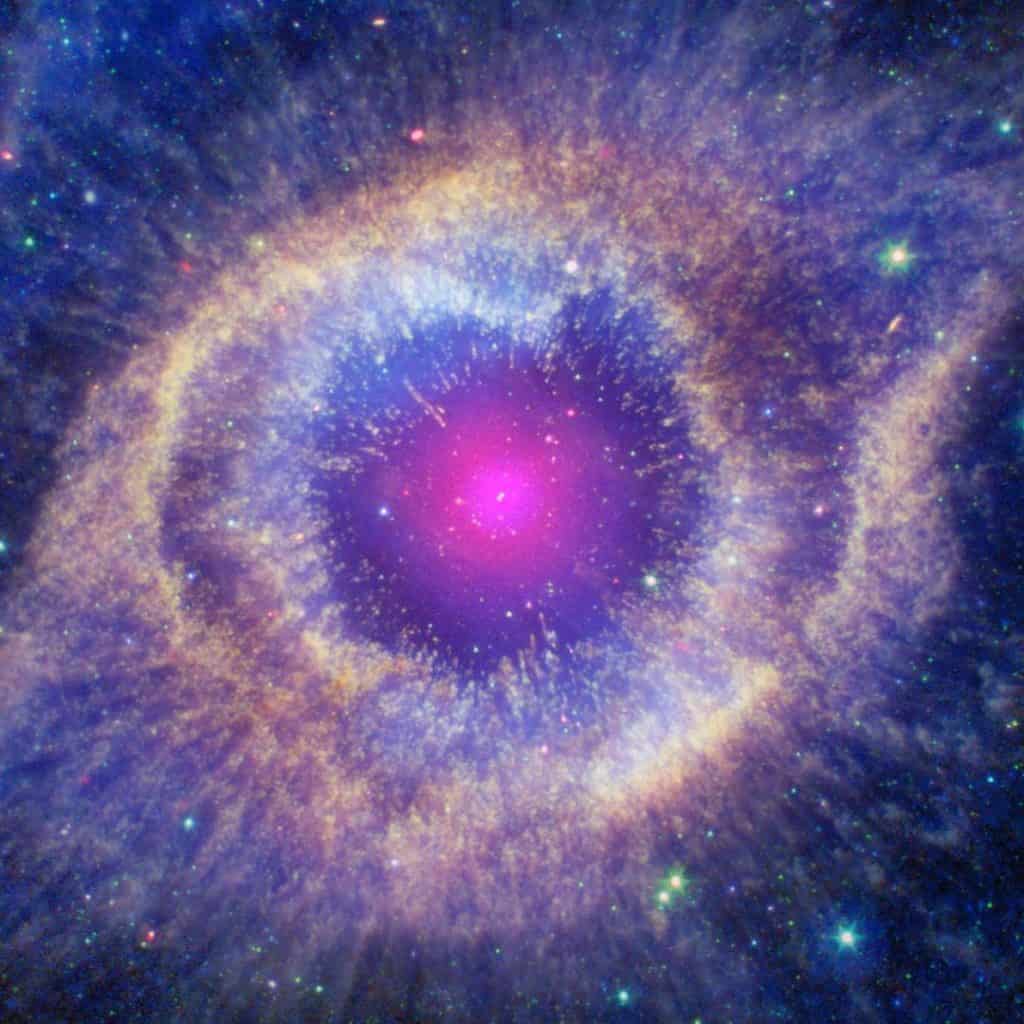The Cosmic Kaleidoscope of the Helix Nebula
At first glance, this image resembles a vibrant, tie-dye pattern from the hippie era. It represents something far more ancient: a white dwarf star in the heart of the Helix Nebula, spanning four light-years from end to end.

NASA’s Spitzer Space Telescope captured infrared data, while the Hubble Space Telescope gathered optical light, allowing for a comprehensive view of this mesmerizing cosmic wonder. By combining these cutting-edge technologies, NASA has unveiled the full spectrum of this celestial phenomenon, offering us a spectacular visual treat.
Advertisement
